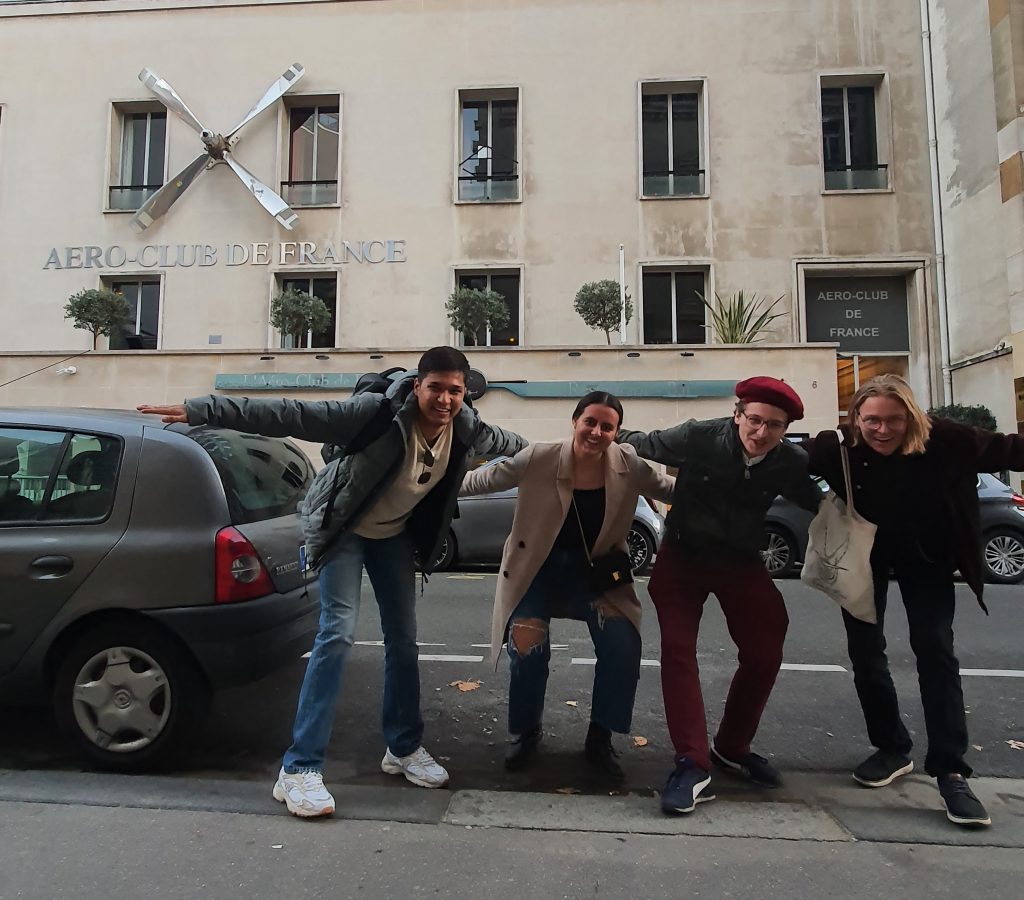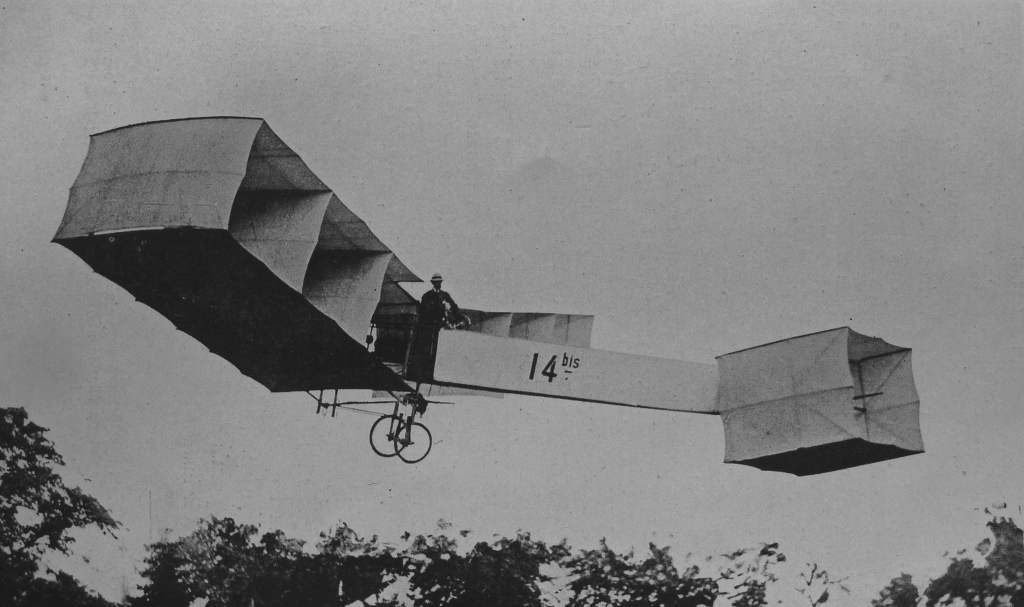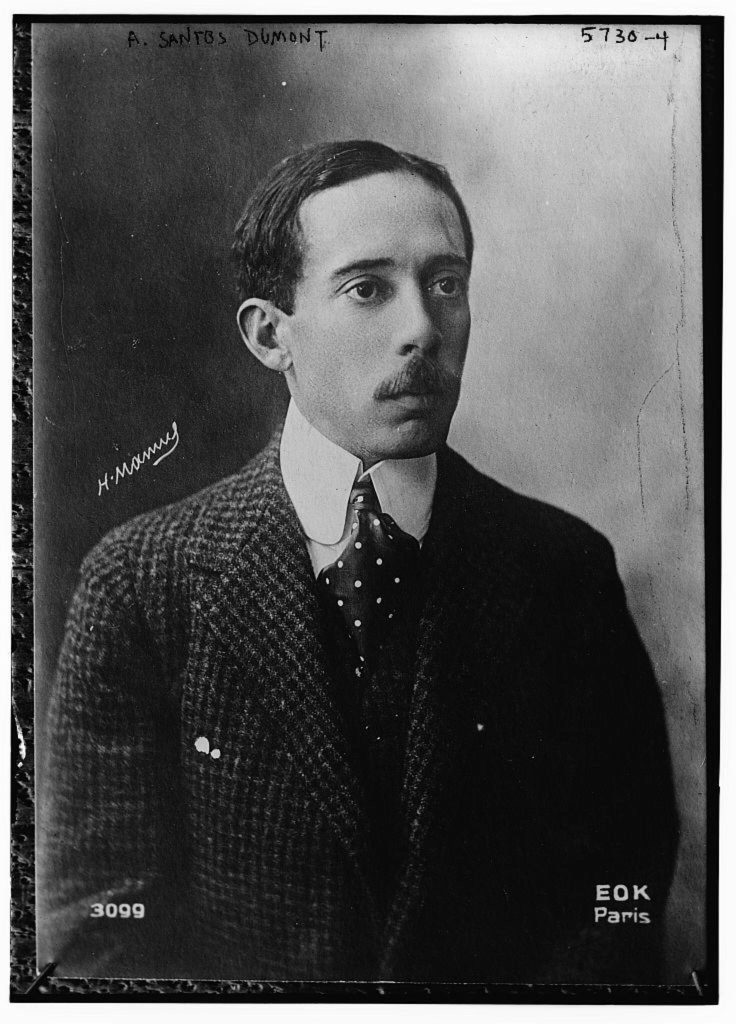The history of Aéro-Club de France
Authors: Marcos Talocchi and Tuomas Simula, Editors Leonardo Times
The Aéro-Club de France was one of the first aeronautical associations in the world, having been founded over a hundred years ago. We explore its history and contributions to aviation, while diving deeper into the life of one of its founding members.
CREATION OF THE CLUB
Near the end of the 19th century, there were first hints of aviation becoming a feasible means of transport. The first powered and controllable airships were developed, and the first heavier-than-air flights were done using gliders. In Paris, a collective of inventors, industrialists and early aviation enthusiasts saw the need for an organization developing and promoting “aerial locomotion”. On the 20th of October, 1898, the Aéro-Club de France was founded by 52 co-signatories, including such notable people as author Jules Verne, industrialist André Michelin, and inventor Alberto Santos Dumont. At first, the Aéro-Club was housed within the Automobile Club de France, as all its founders were also members of this club.
An important function of the Aéro-Club was establishing prizes and competitions for aeronautical records. These monetary prizes further encouraged the development of early aeronautical technology. For example, in 1901 Alberto Santos Dumont earned 100 000 francs for flying his airship from the Aéro-Club, around the Eiffel tower and back in less than 30 minutes. In 1905, the Aéro-Club was one of the founding members of the World Air Sports Federation FAI, the organization responsible for governing international air sports and maintaining world records for aeronautical activities. The first competition for the Gordon Bennett Aviation Trophy, an early competition for heavier-than-air aircraft, was organized by the Aéro-Club in 1909.
The Aéro-Club also took part in early regulation and certification of aviation activities. It was notably one of the first organizations to issue pilot’s licenses from January 1910. The 17 first pilot’s licenses were awarded to important pioneers of aviation, such as Alberto Santos Dumont and the Wright brothers. Exceptionally, they did not have to pass a test, as they had already shown their ability to fly.
The activities of the Aéro-Club were largely disrupted during both world wars. In the interwar period the focus of the club shifted towards promoting aviation as a means of transport available for the public. After the second world war, an astronautical commission was founded as part of the club to promote the novel technology for spaceflight. Over the years, as aviation regulation has switched to more centralized governmental or international organizations and the pace of innovation in aviation has slowed down, the Aéro-Club has shifted towards focusing on the heritage of aviation, but also freedom and humanitarian work. They are still an important part of aeronautical culture, providing education on both the history and future of aviation, while still supporting the development of modern aviation technology.
ALBERTO SANTOS-DUMONT – A FOUNDING MEMBER OF THE AÉRO-CLUB
Born in 1873 in Brazil, Alberto Santos-Dumont was an aeronaut, inventor and early aviation pioneer for both airship and aircraft. He was also one of the founding figures of Aéro-Club de France, having participated in many of the early contests and competitions.
Santos-Dumont spent his childhood in Brazil, growing up on his family’s farm, bought by his father, who worked as an engineer building infrastructure. Fascinated by mechanical contraptions and technology, Santos-Dumont moved to Europe once he turned 18, where he began his studies in the field of mechanics.
Six years later, after having failed to graduate multiple times, he started investing his inheritance money in the development of his aviation projects. In just a couple years he had already created nine balloons. The most famous one, the Amérique, held over 500m3 of Hydrogen and got him a prize for the study of atmospheric currents by the Aéro-Club de France.
The following years were dedicated to the development of airships, engine powered balloons. The first few were without much success, until his No. 6 managed to complete the Deutsch Prize successfully, a trial which involved going from the park of Saint Cloud, in the suburbs of Paris, to the Eiffel Tower and back in less than thirty minutes. Santos-Dumont completed the trial in 29 minutes and 30 seconds, and after being awarded the prize money, he distributed it among his crew and also the general population of Paris, which obtained him “unrestricted support from public opinion”.
In 1906 Santos-Dumont built his most famous plane, the 14-bis. It performed a 60 meters self propelled flight, after taking off by itself without the need of any headwinds, ramps, catapults or slopes. At the time it was believed in Europe to be the first ever such flight. A few weeks later he performed the flight once again, this time with ailerons and better stability, managing to reach a distance of 220 meters and winning the Aéro-Club de France award with the flight.
In 1910, already aged and showing symptoms of multiple sclerosis, he crashed another one of his planes and decided to stop flying. After this, he spent his time supporting the development of aviation in the Americas and advocating for the peaceful use of the aircraft and aviation techniques. In 1927 he was invited to preside over an Aéro-Club de France’s banquet commemorating the crossing of the Atlantic Ocean, but had to decline because of his deteriorating health. A few years later, in 1930 he received a condecoration from the Aéro-Club with the title of Grand Officer of the French Legion of Honor.
After a couple failed suicide attempts, Alberto Santos-Dumont moved back to Brazil where he lived with his nephew. Having spent his entire life advocating against the military use of aircraft, his final days were spent witnessing combat planes flying over him during the Constitutionalist Revolution in São Paulo. After an attack on a nearby airport, he took his own life on July 23 1932.
CONTRIBUTIONS TO AVIATION
The Aéro-Club in its century long history has been pivotal to the development of aviation in Europe and the world. Its contributions range from awarding prizes and rewards for demonstrations and technological advancements, incentivizing new inventions and giving financial support to those working in developing the field, to putting the first flight regulations in place and creating pilot’s flight licenses. The club also played a pivotal role in awarding patents for different aircraft inventions, not only in Europe but in the entire world.
Furthermore, during the interwar period, the Aéro-Club started organizing various aviation projects, such as ocean crossings and an aerial tour de France, with the main purpose of bringing aviation available to more people. Sporting events were relaunched, and air tourism was introduced with the support of industrialists and businessmen.
The club also makes an effort to include more women in aviation with the creation of its women’s section, even though the club has been open to women pilots since it started awarding licenses. In 1945 an Astronautical Commission was created to support space efforts and serve as judges for space records and awards.

CONCLUSION
Founded in 1898, the Aéro-Club de France was very influential during the early days of aviation in Europe. It supported research and experiments by awarding prizes for aeronautical achievements, while also providing a space for the pioneers of aviation to meet and work on their projects. Many of its members have brought great advancements in the field of aeronautics, such as the Brazilian inventor Alberto Santos-Dumont. To this day, they keep promoting aviation and supporting the development of aeronautical technology. Their headquarters near the Champs-Élysées are an interesting sight for any aviation enthusiast visiting Paris.



